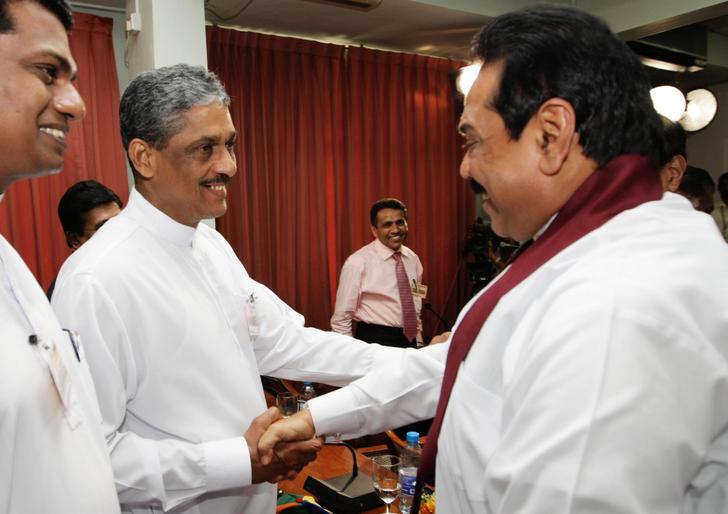
B. Muralidhar Reddy - It is nearly a month since the presidential election, and the Fonseka factor refuses to fade away. The dramatic detention of General Sarath Fonseka, the defeated common opposition candidate and former Army chief, by the military police on the night of February 8 has taken the sheen off the spectacular re-election of President Mahinda Rajapaksa. The action, widely perceived as vindictive, has actually given a fresh lease of life to the commander-turned politician, who continues to reel under the shock of his loss.
Even some of Rajapaksa’s ardent supporters are critical of the arrest and have voiced their concerns over its possible consequences in an already polarised society. In the write-up “The Fonseka affair: A perfect blunder?”, Dayan Jayatilleka, the island nation’s former Permanent Representative at Geneva and a supporter of Rajapaksa, said:
“Are we headed for a third great cycle of violence? Sri Lanka has experienced two so far: the violence of the Sinhala underprivileged youth vs the system, and the youth of the Tamil periphery vs the Sinhala heartland. Are we living through the prelude of a third cycle, this time of a Cold War turning hot – factional strife turning into civil conflict – within the Sinhala establishment itself?”
There are many who concur with Jayatilleka’s view. They feel that the timing and tactics behind the General’s arrest and the President’s handling of the general situation after his re-election were a perfect blunder.
Over 200 personnel led by a Major General descended on Fonseka’s election office when he was discussing the upcoming parliamentary elections with Janatha Vimukthi Peramuna (JVP) leader Somawansa Amerasinghe, his party parliamentarian Sunil Hadunnetti, and political leaders Rauf Hakeem and Mano Ganesan. Fonseka argued in vain with the officers that since he was a civilian he could be arrested only by the police and not the military.
The government’s legal advisers say that there is provision under the Army Act to try offenders who have ceased to be subject to military law. The main charge against Fonseka is that he put together a group of retired officers and soldiers to overthrow the government and assassinate the President. Fonseka has denied this. Another allegation is that he indulged in corrupt deals with respect to Army supplies. The news of the arrest spread like wildfire, and the following day the Opposition issued a joint statement: “….We believe this act is one of vengeance aimed at punishing Gen. Fonseka for daring to contest the presidential election held last month, challenging the incumbent. The arrest follows a fortnight of intense post-poll violence unleashed by government supporters and sweeping moves to purge the government service and the armed forces of would-be opposition supporters. Gen. Fonseka’s arrest marks the climax of this unprecedented witch-hunt of the opposition in the election aftermath and we condemn this dictatorial and anti-democratic move in the strongest possible terms.
“The military arrest of Gen. Fonseka who is a retired Army official and therefore a civilian is not only unlawful but barbaric and extrajudicial and is a clear sounding of the death knell for democracy in this country. We have good reason to believe that the extrajudicial arrest of Gen. Fonseka may be followed up with assassination while in custody, on a trumped-up charge that he was attempting to escape or attack.
“Therefore, we demand that the government ensures the safety and security of Gen. Sarath Fonseka, the Army Commander who led our troops to victory over the LTTE less than a year ago. How can the government treat a war hero and a Commander they once glorified so vividly? In this despicable manner, today the ‘world’s best Army Commander’, in the words of the Defence Secretary, has been arrested and dragged off by his feet like a common criminal. President Mahinda Rajapaksa campaigned on a platform of gratitude, but he has proved today that he himself does not know the meaning of the word….
“We, the joint opposition, call upon the people to rise up against this injustice and let your voices be heard. They may have the might, but we persist in holding the numbers. It is only unity and popular support that can pose any kind of threat to this dictatorial administration. We urge all those who believe in the need to keep democracy alive in Sri Lanka to join us and rally against this ruling junta and do whatever it takes to protect our motherland from destruction. In the past, Sarath Fonseka and his soldiers fought in the blood-drenched battlefields of this country to keep us safe. The time has come for us to rise up and return the favour….”
Fonseka has challenged the detention in the Supreme Court, and the case is posted for hearing on February 23. Separately, he has also contested the outcome of the presidential election. The petition says that the majority of voters were prevented from electing the candidate of their choice, namely Fonseka, and/or the result may have been affected by acts of intimidation, violation of laws and the commission of corrupt practices.
Parliament election
Focus has now shifted to the general election scheduled for April 8 to elect a new Parliament. Fonseka, who hogged the limelight in the last two months, appears to retain the position as a leading figure in the general election as well.
However, unlike the presidential election, in which he emerged as the rallying point for all the political foes of Rajapaksa, Fonseka will be one of the many leaders in the fray and that too perhaps from behind bars.
The contours of the alliances and electoral understandings are beginning to emerge and there will be at least three main groupings. The mainstream opposition parties, which demonstrated a rare unity in the presidential election, have decided to part ways and form their own alliances for the parliamentary election.
The main opposition party, the United National Party (UNP), led by former Prime Minister Ranil Wickremesinghe, has decided to fight under its own election symbol. It is wooing several smaller parties that had thrown their weight behind Fonseka in the presidential race.
So far the Sri Lanka Freedom Party (Mahajana wing) led by Mangala Samaraweera, the Sri Lanka Muslim Congress (SLMC) led by Rauf Hakeem, and the Democratic People’s Front (DPF) led by Mano Ganesan have agreed to contest on the UNP platform and symbol.
Ironically, Fonseka, who had brought the opposition parties together, is set to lead the Democratic National Alliance (DNA) floated by the JVP. It will be an uphill task for the two opposition alliances to take on a fully charged ruling combine, the United People’s Freedom Alliance (UPFA) led by Rajapaksa.
The signs of disunity in the opposition were evident soon after the presidential election result was announced. While Wickremesinghe chose to describe the election as fair, the JVP dubbed it as the biggest computer fraud in the nation’s electoral history.
The term of the 225-member House, which came into being in 2004, was scheduled to end in April. It was a well-calculated move on the part of the President to go in for a presidential election almost two years before his first term came to an end. It was aimed at cashing in on his popularity as a political leader who had led the military to a victory over the Liberation Tigers of Tamil Eelam (LTTE). With his resounding victory, Rajapaksa has the advantage of a firmer grip on his party, the Sri Lanka Freedom Party (SLFP), and its alliance partners. He would also have the last say in all matters related to choosing candidates for the general election.
UPFA
In the last election, the UPFA, led by the then President Chandrika Kumaratunga, secured a majority by winning 105 seats. The UNP secured 82 seats. The Tamil National Alliance got 22 seats, while the Jathika Hela Urumaya (JHU) nine.
As per the Election Commission data, the UPFA received 4,223,970 (45.6 per cent) votes, the UNP 3,504,200 (37.83 per cent), the TNA 633,654 (6.84 per cent) and the JHU 554,076 (5.97 per cent) votes. The Lanka Sama Samaj Party (LSSP), the Communist Party, the Democratic United National Front (DUMF), the Mahajana Eksath Perumana (MEP), the Sri Lanka Muslim Party (SLMP) and the JVP were UPFA constituents.
After Rajapaksa was elected in November 2005, he sought the cooperation of the UNP in defeating terrorism. In October 2006, the two parties signed a historic document agreeing to cooperate on issues of national interest. This included finding a common approach to resolve the ethnic conflict.
However, the agreement was declared as null and void after the President accommodated 17 senior UNP parliamentarians, including the party’s deputy leader, Karu Jayasuriya, in his government. The UNP accused Rajapaksa of attracting its parliamentarians with offers of ministerial positions.
The JVP joined the opposition citing, among other things, its disagreement with the President over the question of bringing all parties on board to find a solution to the ethnic conflict.
At the time of its dissolution, the Parliament’s composition had changed completely from what it was in 2004. Rajapaksa not only succeeded in splitting the opposition ranks but also conjured up a majority for the ruling combine. Most of the key Ministers in the government are from the ranks of the UNP.
The Sri Lankan Parliament is constituted on the basis of the system of proportional representation, which is based on the percentage of votes polled by individual parties, and direct election. So, all the major parties are assured of a relatively decent presence in the next Parliament.
With a massive margin of over 17 percentage points in the recently held presidential election, the SLFP and the UPFA have a clear edge over the divided and battered opposition. However, it needs to be seen how far the outcome of the general election outcome will be determined by the controversy triggered by Fonseka’s detention.
© Frontline
![Reblog this post [with Zemanta]](http://img.zemanta.com/reblog_e.png?x-id=2f6b3781-cc25-4e71-b55a-50497774289b)

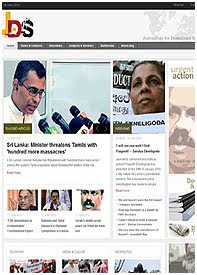

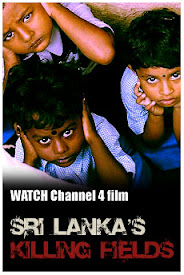

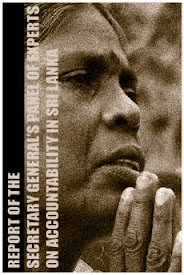



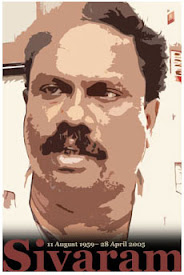

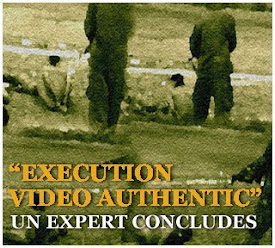

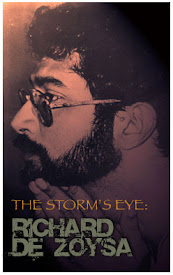

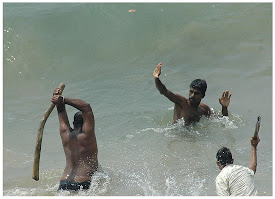
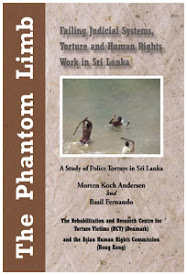
No comments:
Post a Comment